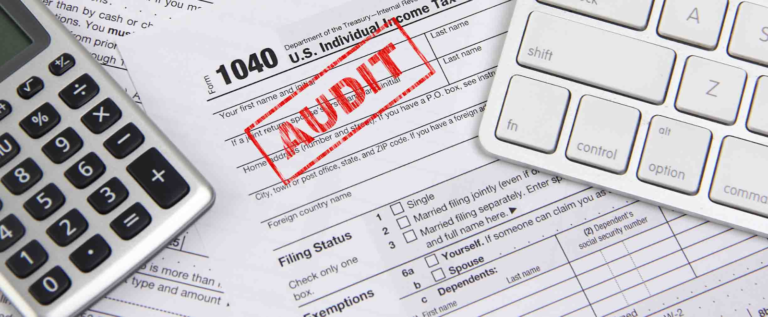Inventory labeling is the process of properly identifying and categorizing all items within a business’s inventory. This can include physical labels attached to products, as well as digital labels in electronic inventory systems. Inventory labeling plays a crucial role in streamlining business operations and ensuring efficient inventory management.
The primary purpose of inventory labeling is to provide clear identification and organization of products within a business’s inventory. By assigning unique labels to each item, employees can easily locate and track specific products, reducing the likelihood of human error and speeding up the fulfillment process. Proper labeling also allows for accurate counting during stock takes, minimizing discrepancies and preventing overstocking or understocking.
One aspect of inventory labeling that is often overlooked is its impact on customer service. With clear labeling, businesses can quickly fulfill orders and provide accurate information about product availability to customers. This not only improves customer satisfaction but also helps build trust in the business’s ability to manage their inventory effectively. Proper inventory labeling is a crucial aspect of efficient inventory management. It enables businesses to streamline their operations, improve customer service, maintain an organized storage system, and make timely reordering decisions. With the right labeling practices in place, businesses can better manage their inventory and ultimately increase profitability.
The Benefits of Proper Inventory Labeling
Proper inventory labeling can significantly boost your business operations by enhancing efficiency and accuracy in tracking your products. With clear labels on each item, you can easily locate and identify what you need, reducing the time spent searching for specific items. This streamlined process not only saves time but also minimizes errors that could lead to costly mistakes.
Moreover, organized inventory labeling helps prevent overstocking or stockouts by providing real-time visibility into your stock levels. By knowing exactly how much of each product you have on hand, you can optimize ordering and stocking processes to meet customer demand effectively. This level of control over your inventory ensures smoother operations and prevents unnecessary losses due to mismanagement.
In addition, proper labeling enables better categorization and sorting of products within your warehouse or storage facility. By assigning unique identifiers to items, you can create a systematic approach to managing your inventory, making it easier to track movements and monitor stock turnover rates effortlessly.
Types of Inventory Labels
When it comes to inventory labels, there are various types that businesses can use to streamline their operations. Inventory labels are an essential part of any business that deals with managing and tracking inventory. They serve as a visual representation of the items in stock, providing important information such as product details, location, and quantity. There are various types of inventory labels available, each serving a specific purpose to help streamline your business operations. In this section, we will discuss the different types of inventory labels and their functions.
1. Basic Inventory Labels: These are the most commonly used type of inventory label and contain basic information such as product name, description, SKU number, and barcode for easy scanning. They come in various sizes and shapes to fit different products or storage containers.
2. Color-Coded Labels: As the name suggests, these labels use different colors to differentiate between various products or categories. This helps in quick identification and sorting of goods during picking or restocking processes.
3. Location Labels: These labels are used to mark the specific location where an item is stored within a warehouse or storage facility. They can also include additional details such as bin numbers or shelf levels to further streamline the picking process.
4. QR Code Labels: Quick Response (QR) code labels have gained popularity due to their ability to store large amounts of data compared to traditional barcodes. These codes can be scanned using mobile devices for quick access to product information or tracking purposes.
5. Serialized Labels: Serialized labels contain unique serial numbers that allow for individual tracking of each item within a batch or lot number. This type of labeling is useful for businesses dealing with high-value items or those that require strict traceability.
6.Durable Labels: Durable labels are specially designed for products that may be exposed to harsh environments like extreme temperatures, moisture, chemicals, etc. They have strong adhesives and can withstand wear and tear over time without fading or peeling off.
7.Blank Labels: Blank labels provide businesses with the flexibility to customize them according to their specific needs. They can be used to create unique barcodes or QR codes, add additional information, or even incorporate a company logo for branding purposes.
Choosing the right type of inventory label is crucial in streamlining your business operations. It not only helps in accurate tracking and management of goods but also ensures efficient processes such as picking and restocking. By understanding the different types of inventory labels available, businesses can make informed decisions on which labeling system best suits their needs.
How to Create Effective Inventory Labels?
When it comes to creating effective inventory labels, simplicity is key. Start by clearly identifying the item with a brief description or code that is easy to understand and locate.Consider including important details like product name, SKU number, and expiration date if applicable. Utilize color coding or symbols to help differentiate between categories or urgency levels. This visual aid can streamline the sorting process and make it easier for your team to quickly identify items in high-demand.
Ensure consistency across all labels within your inventory system to avoid confusion or errors. Establish a uniform format that includes essential information while leaving out unnecessary clutter that could cause misinterpretation. Regularly review and update your labeling system as needed to adapt to changes in inventory levels or product variations. By staying proactive and organized, you can maximize efficiency and minimize disruptions in your operations.
Tips for Managing and Organizing Labeled Inventory
By following these tips, you can streamline your inventory processes and improve overall productivity within your business operations.
1. Use a clear and consistent labeling system: The first step in effectively managing and organizing your labeled inventory is to establish a clear and consistent labeling system. This will ensure that all items are easily identifiable, and there is no confusion among employees or customers. Consider using a combination of letters, numbers, and colors to create a comprehensive labeling system.
2. Label everything: Don’t just label the main product or item; make sure to also label its packaging, components, and any associated documents or paperwork. This will help prevent mix-ups and inaccuracies in your inventory records.
3. Regularly review and update labels: As your inventory changes, it’s essential to regularly review and update labels accordingly. This includes adding new items, removing discontinued products, or replacing damaged labels. By keeping your labels up-to-date, you can avoid confusion and maintain accurate inventory records.
4. Utilize technology: With the advancement of technology, there are now many tools available that can assist with managing labeled inventory. Barcode scanners, RFID tags, and inventory management software can help streamline the process by providing real-time updates on stock levels and automating data entry tasks.
5. Store labeled items strategically: It’s crucial to have a designated storage area for labeled items so that they are easily accessible when needed. Consider organizing them based on their label type or category to further streamline the process.
6. Train employees on proper labeling procedures: Having well-trained employees who understand the importance of proper labeling can significantly impact the efficiency of your inventory management processes. Make sure all staff members are familiar with the labeling system used in your business and know how to correctly apply labels.
7.Environmental considerations: When selecting labels for your inventory items, consider environmental factors such as temperature changes or exposure to moisture that could affect their adhesive properties over time. Using durable materials for labeling ensures that they remain intact even under harsh conditions.
8. Conduct regular audits: Regularly conducting inventory audits is crucial for maintaining accurate records and identifying any discrepancies or errors in labeling. This will also help you to identify slow-moving or excess inventory that may need to be re-labeled or removed from your inventory altogether.
By following these tips for managing and organizing labeled inventory, you can effectively streamline your business operations and maintain accurate records. Proper labeling not only saves time but also helps prevent costly mistakes and ensures customer satisfaction by providing easy access to products when needed.
The Role of Technology in Inventory Labeling
Technology plays a crucial role in modern inventory labeling processes. With the advancement of technology, businesses can now utilize barcode scanners and RFID tags to automate their inventory management. These tools not only ensure accurate tracking but also save time and reduce human error.
Barcode scanners allow for quick and efficient data input by simply scanning labels, eliminating the need for manual entry. On the other hand, RFID tags use radio waves to transmit information wirelessly, enabling real-time tracking of inventory items throughout the supply chain. Furthermore, inventory management software integrated with labeling technology provides businesses with valuable insights into stock levels, expiration dates, and replenishment needs. This data-driven approach enhances decision-making processes and improves overall operational efficiency.
By leveraging technology in inventory labelling, companies can streamline their operations, minimize losses due to mismanagement or misplaced items, and ultimately boost productivity within their organization.
Case Studies: Companies That Have Benefited from Proper Inventory Labeling
Company A, a retail giant, implemented a barcode labeling system that revolutionized their inventory management. With the ability to track stock levels in real-time, they reduced overstock and out-of-stock situations.
Company B, a small e-commerce business, turned to RFID tags for their products. This technology allowed them to streamline their picking and packing processes, decreasing errors and improving order accuracy.
Company C, a manufacturing company, utilized color-coded labels on their raw materials to enhance visibility in their warehouse. As a result, they improved efficiency in locating items and optimizing storage space.
These success stories highlight how proper inventory labeling can transform businesses of all sizes across various industries. By investing in effective labeling strategies tailored to their specific needs, companies can boost productivity and profitability seamlessly.
Conclusion
Proper inventory labeling is not just a mundane task but a crucial process that can significantly impact your business’s efficiency and success. By implementing effective inventory labeling practices, you can streamline operations, reduce errors, improve accuracy, enhance traceability, and ultimately boost customer satisfaction.
Avoid common mistakes like inconsistent labeling formats or neglecting to update labels when changes occur. Stay proactive in managing your labeled inventory by conducting regular audits and maintenance checks to ensure everything is up-to-date. Embrace the power of proper inventory labeling as a strategic tool to drive efficiency, accuracy, and success in your business operations. Start today by reviewing your current labeling system and making necessary improvements – it’s an investment that will undoubtedly pay dividends down the line!







